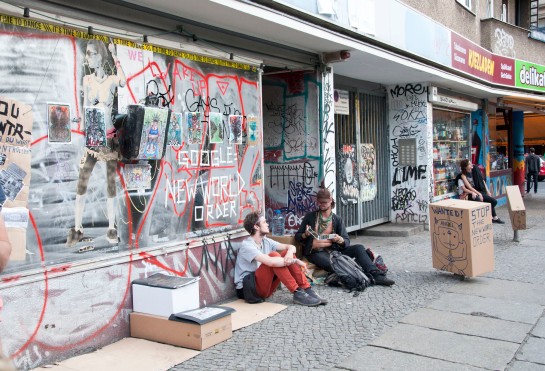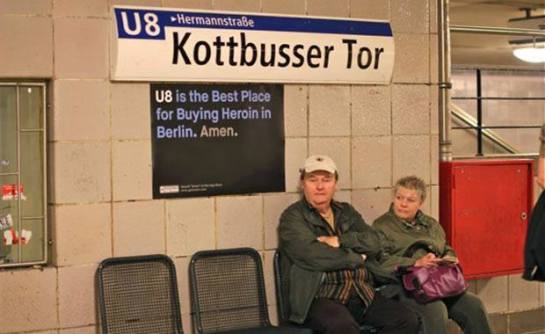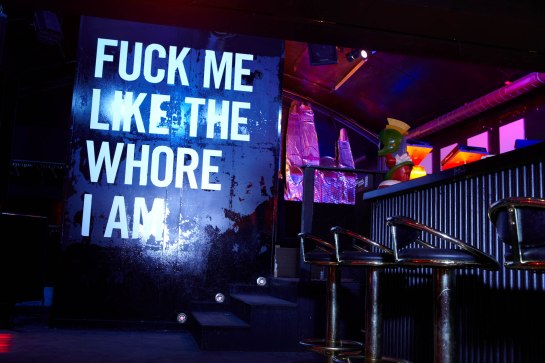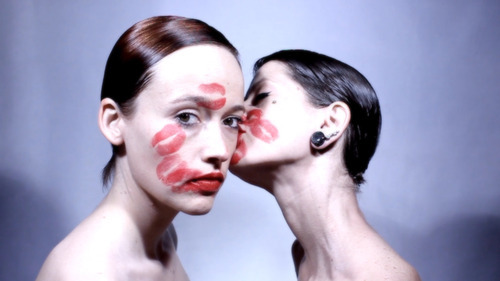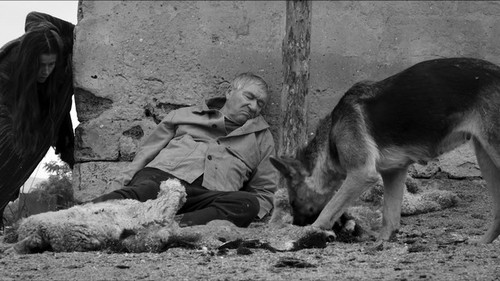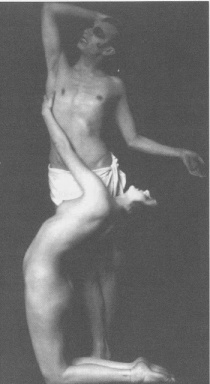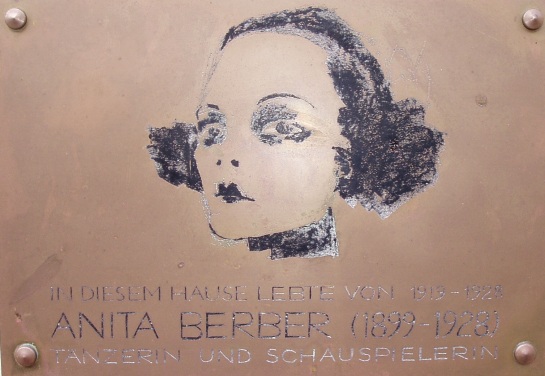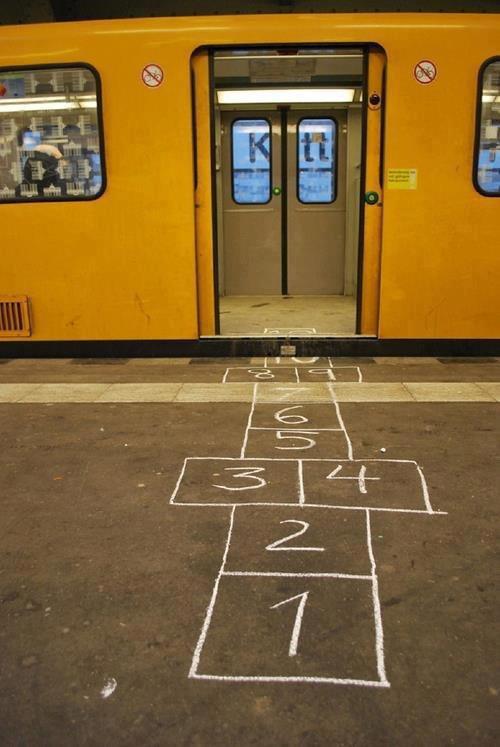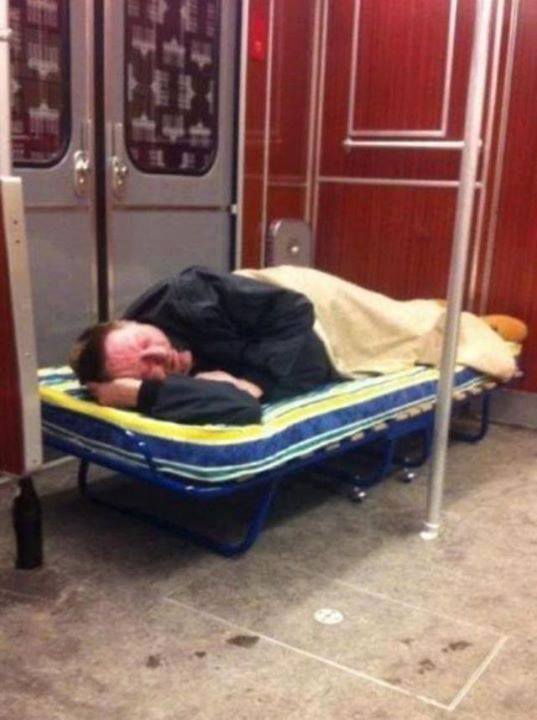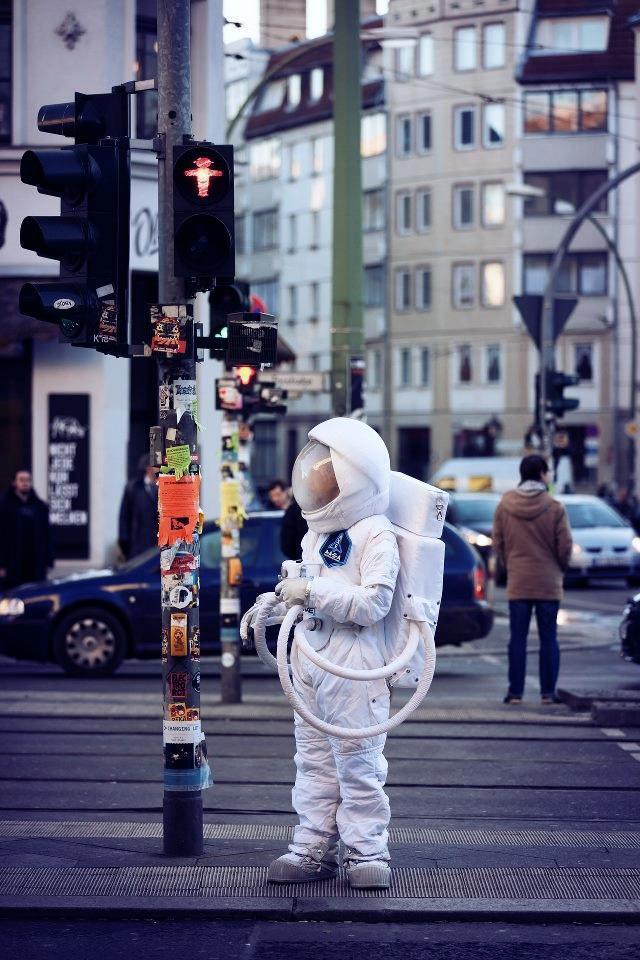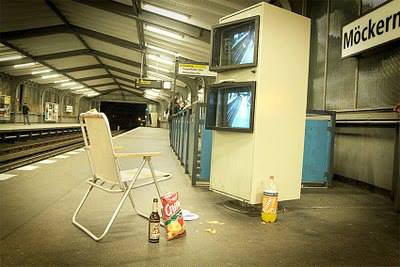1. To love dogs. I used to have panic attacks, when I saw a dog, and I never wanted to have one myself. Berlin changed it all. From big to small Berlin dogs never bark, never jump, don’t wear a leash and can sit outside the shop without making a move or noise what-so-ever. See for yourself here.
2. That the artist has to know how to sell. You are the product, the marketer and the seller all in one.
3. To love beer. Before I moved to Germany, I strongly disliked this type of alcohol. Now I can tell the tourists what is what. I also learned that your bathtub is your beer fridge for the house party. And if you haven’t drank beer in -10, you have not been to Berlin.
4. That Berlin has the best Zoo in Europe. When you’re sad, I strongly recommend visiting this place, where you can easily spend the whole day.
5. To make the bridge bounce while dancing on it (Modersohnbrücke in particular). Get DJs, get a good stereo system, invite people, make a party, let the heavy cars still go over the bridge, dance like none is watching, make it bounce, feel it!….
6. That unfortunately yoga and being vegan can be fashionable. After several years of living here I got a flock of sheep impression. Because people without reason are trying to do both and are not realising, that it does not suit every body, and both vegan lifestyle and yoga can do harm. Yet on every corner in Berlin you now will find a yoga center and even though Germany has really good meat and lots of farms and farm product delivery options, Berliners are trying to avoid iron and take B12 Vitamin. Dear readers, everything should be in balance. I have vegetarian/vegan friends and I respect them. Find your reason first, and make sure your body agrees with it.
7. To multi task. German classes in the morning, work until 20:00, meeting friends in the evening + contributing to 10 other projects at the same time.
8. To cook crackers and bread without flour and eggs. I worked for a paleo restaurant, where I learned the secret.
9. To cycle in Neukoelln. Neukoelln inhabitants have a tendency to stop their cars randomly in the middle of the street, they also ignore traffic lights which turns a cyclist experience into survival.
10. To travel with soup pots and baking dishes on the underground. Shared food parties is a normal practice here. Great and sweet idea too!
11. That the trash bags can cost €3,50 when they’re bio supposte to normal ones for €0,59. Recycling is a big thing here.
12. What means an amazingly relaxed big city life. It’s the capital, but there is no stress and no rush. No rush in the morning, no rush in the evening, no rush for the party…
“There just isn’t really this fear of missing out,” Mr. DeNorch said. “You just feel like wherever you’re at is fine. You’re just having a good time.” … “When you want to go out to the club, you grab a beer on the way,” he said. “You can buy some weed on the street so you can smoke a joint if you want to. There’s all these little things you can do here that you can’t do there to get you in the mood.”
“In New York specifically, there’s a huge amount of stress about what you’re doing tonight and where you’re going to be in the city and who you’re going to be with,” said Mr. Ladner, a founder of the Janus party.
Read full Article on NYTIMES
13. A feeling of blended genders. Berlin is the city where I’ve received the least amount of compliments. In here you forget that you’re a woman, as it does not matter how attractive you look, people seem to not pay any attention, because they like it all: any size and any gender. There are both negative and positive aspects of this, yet this is typical Berlin.
14. That Berlin is a temporary stop for many of us.
15. That work and parties in Berlin are like black and white. “…half of all Berliners make under 1500 EUR a month, and a third less than 1000 EUR” (source).
Berlin is the poorest German city, with highest unemployment rate and half of the expats are receiving the job-centre benefits. Berlin is the place where jobs don’t last long. And it’s also normal if you have not been paid up to a year, but then you might want to go to the lawyer. On what really is happening in Berlin and the city’s mayor you can read here.
As about the parties – they are always here: cheap or absolutely free, 7 days a week. On a hot summer weekday all the parks in Berlin are full with jobless people or people who do odd jobs. Berlin parties more than it works. If you are considering Berlin as your next career destination, please think of Hamburg first.
16. That Berlin’s tech startup scene is far behind the Silicon Valley, and that we Europeans are modest in comparison to brave Americans, who can sell an old three-leg-chair without blinking as a brand new one.
17. That bio products in Germany are at least 95% bio, full stop. My research on eco label in Germany you can read here.

A berliner in a box by Dorit Bialer http://iwanteverything.de/
19. I also learned that giving a birth and remaining skinny is a normal practice in Berlin. The answer to “how?” I still haven’t found.
20. That it is okey to be explicit, naked and have sex in public spaces. Freedom to everyone. Just be yourself. No judgement, no fashion, no boundaries. From train station to night life. Berlin is possibly the most sexually open city on earth, that also makes a stable classical relationship almost impossible. Berlin greets open relationships, swingers, gay/lesbian/transexual, BDSM and other experimental loving methods.
“Ask any straight woman over 30 and she’ll tell you that the odds of finding a committed man in this city are about as high as unearthing the Holy Grail. Is there any hope for the single Berlin female?”
– See more at: http://www.exberliner.com
“Men are like toilets. They’re always occupied, and when they’re not – they’re full of shit. Well, welcome to Berlin!”
– Emilie
